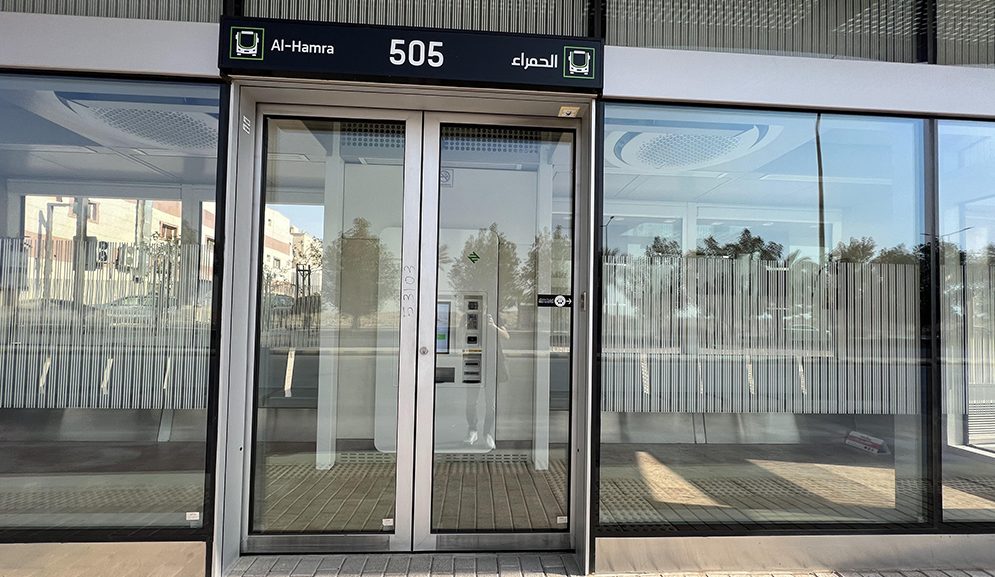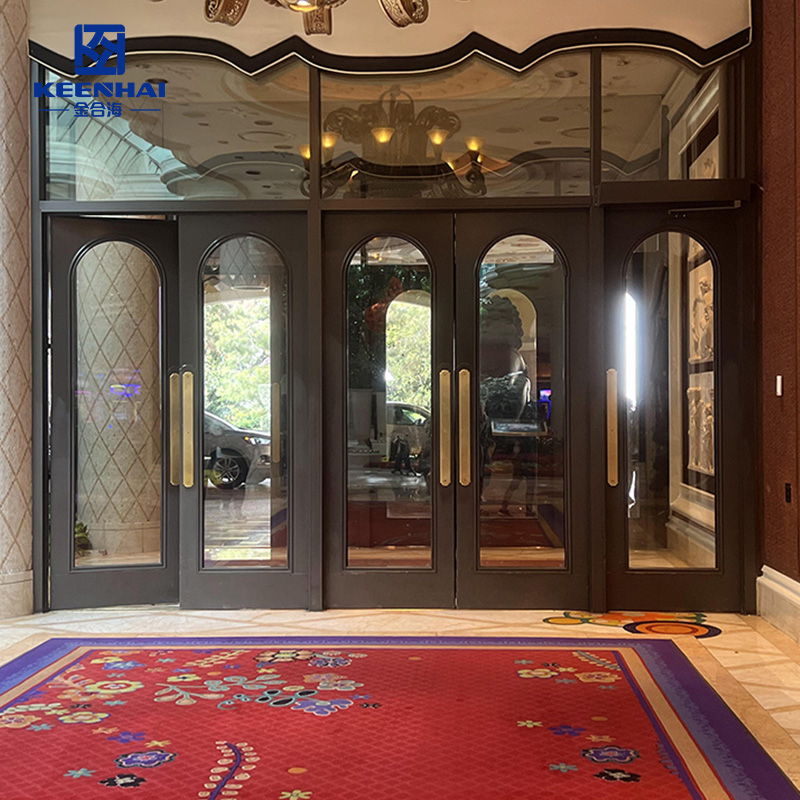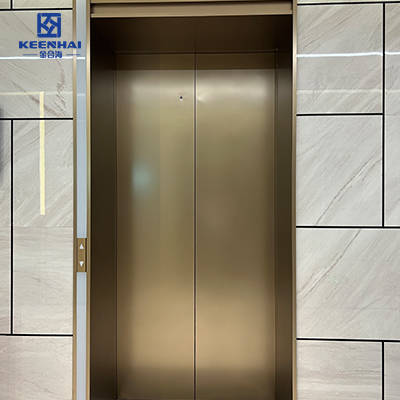When deciding, consider cost, installation, and long-term performance. Hinged doors often have lower initial material and labor costs, while sliding doors may cost more upfront due to rollers and tracks. Maintenance patterns differ: hinges last longer with minimal lubrication, whereas sliding tracks need alignment and cleaning. Assessing door traffic, environmental conditions, and aesthetic goals ensures the right choice for both function and style.
1.Structural Differences Between Hinged and Sliding Doors
When deciding between a Stainless Steel Glass Swing Door and a stainless steel sliding door, understanding their structural differences is critical. These differences affect durability, daily operation, space requirements, and installation complexity.
1.1 Frame and Hinge Mechanism
Glass Swing Doors rely on pivoting hinges to support the door leaf. High-quality hinges paired with SUS 304 or 316 steel frames can handle panels up to 300 kg, ensuring smooth swinging without sagging. In commercial projects, like the Shanghai Lujiazui office towers, Glass Swing Doors are preferred for main lobbies because they provide a grand entrance effect while maintaining structural stability. Sliding doors, on the other hand, transfer the door weight along rollers and tracks, requiring precise alignment and reinforced frames to avoid wear or misalignment over time.
1.2 Track and Roller Systems
Sliding doors depend on track quality, roller precision, and alignment accuracy. Poorly aligned tracks cause uneven movement, noise, and accelerated wear on rollers. Typically, stainless steel sliding systems use double or triple roller configurations to distribute weight evenly. Hinged systems have fewer moving parts, making them easier to maintain and less prone to operational issues in high-traffic areas.
1.3 Weight and Glass Support Considerations
The door’s weight distribution directly affects glass panel thickness and overall durability. Glass Swing Doors support thicker laminated or tempered glass (10–12 mm) since weight transfers through hinges to the frame and wall. Sliding doors generally work best with 10–12 mm tempered glass to reduce track friction and prevent roller strain.
| Feature | Glass Swing Doors | Sliding Door | Notes |
|---|---|---|---|
| Max Panel Weight | 300 kg | 250 kg | Based on SUS 316 frame and standard hardware |
| Glass Thickness | 10–12 mm | 10–12 mm | Laminated recommended for high-traffic areas |
| Hardware Complexity | Hinges, locks | Track, rollers, soft-close | Sliding requires precise installation |
| Space Requirement | Swing radius needed | Minimal floor space | Sliding saves interior footprint |
| Maintenance | Quarterly lubrication | Semi-annual track cleaning | Hinges simpler to maintain |
Real-World Applications:
-
In Guangzhou retail malls, sliding doors optimize space in narrow corridors while ensuring smooth access for heavy foot traffic.
-
In Shanghai boutique hotels, hinged stainless steel glass doors create a bright, open entrance that complements stone facades and luxury interiors.
By understanding these structural distinctions, architects and building owners can choose a system that balances space, durability, and operational efficiency, ensuring the door performs reliably for years.

2.Space Efficiency and Functional Suitability
Choosing between a stainless steel glass swing doors and a stainless steel sliding door often comes down to space availability and functional needs. Each system has strengths that make it suitable for specific architectural layouts and traffic patterns.
2.1 Footprint and Opening Clearance
Glass Swing Doors require clear swing space, meaning the door leaf needs enough room to open fully without obstruction. Typically, a single hinged leaf requires 80–100 cm of clearance, while double doors need 1.6–2 m depending on panel width. Sliding doors save floor space because the panels move along tracks parallel to the wall. In tight corridors or areas with high pedestrian flow, sliding systems reduce obstruction risks and allow maximum usable interior space.
| Feature | Glass Swing Doors | Sliding Door | Notes |
|---|---|---|---|
| Floor Space Usage | High | Low | Sliding doors save up to 60–70% of swing space |
| Opening Width | Up to 2 m (double leaf) | Up to 3 m (multi-panel) | Sliding can accommodate wider entrances with fewer panels |
| Clearance Needed | 80–100 cm per leaf | Track space only | Critical for corridors and high-traffic areas |
Real-World Application:
In Shanghai boutique hotels, hinged stainless steel glass doors create a grand lobby entrance but require careful space planning for furniture placement. Conversely, Guangzhou retail corridors use sliding doors to maximize interior space and avoid traffic bottlenecks.
2.2 Ideal Use Cases: Residential vs Commercial
Residential projects often favor Glass Swing Doors for their classic appearance, robust structure, and ease of installation. Homeowners appreciate the security and style offered by custom stainless steel hinged entry systems, especially for main entrances.
Commercial buildings, such as offices, shopping malls, and hospitals, frequently choose sliding doors to handle high pedestrian volumes efficiently. Sliding systems provide continuous access, energy efficiency (reducing air leakage), and safety, particularly in automated versions.
Scenario Examples:
-
A high-rise office in Lujiazui uses sliding doors at the entrance lobby to accommodate hundreds of daily users without causing congestion.
-
A luxury villa in Suzhou installs hinged stainless steel glass doors to combine security with aesthetic appeal, ensuring both function and visual impact.
By analyzing footprint requirements and usage patterns, designers can select the door system that best matches spatial constraints and operational needs, balancing style, efficiency, and practicality.

3.Durability and Maintenance Requirements
When selecting a stainless steel glass swing doors or a stainless steel sliding door, understanding their durability and maintenance needs is critical for long-term performance. Both types have unique wear points, and proper care ensures they operate smoothly for years.
3.1 Longevity of Hinges vs Tracks
Glass Swing Doors rely on high-grade pivoting hinges that can withstand up to 300 kg per leaf with minimal wear when lubricated quarterly. Stainless steel hinges, especially SUS 316, resist corrosion, making them ideal for coastal or humid climates. Sliding doors distribute weight along rollers and track systems, which experience friction and require more precise installation. Without regular adjustment, rollers can wear unevenly, leading to noise, vibration, or misalignment.
| Component | Glass Swing Doors | Sliding Door | Notes |
|---|---|---|---|
| Max Weight Support | 300 kg | 250 kg | SUS 316 hardware standard |
| Expected Lifespan | 15–20 years | 10–15 years | Hinges are simpler to maintain |
| Common Failure Points | Hinge pin wear | Roller track misalignment | Sliding requires precise installation |
| Environmental Suitability | Coastal & urban | Mostly indoor/commercial | Hinges handle more varied conditions |
Real-World Scenario:
At a Shanghai commercial office, hinged stainless steel glass doors in the main lobby have operated flawlessly for over 10 years with minimal hinge maintenance. Meanwhile, sliding doors in a Guangzhou shopping mall required track realignment and roller replacement every 2–3 years due to heavy daily traffic.
3.2 Cleaning and Maintenance Frequency
Cleaning and maintenance schedules differ between the two door types:
-
Glass Swing Doors: Wipe frames with non-abrasive stainless steel cleaner monthly, lubricate hinges quarterly, and inspect for loose screws or minor misalignment.
-
Sliding Doors: Clean glass and track surfaces monthly, lubricate rollers and guides every six months, and check track alignment to prevent wear.
Practical Tip: Using tempered or laminated glass reduces surface scratches and simplifies cleaning. In high-traffic commercial lobbies, automated sliding doors benefit from soft-close mechanisms that reduce impact stress and prolong lifespan.
Properly understanding wear points, cleaning routines, and environmental exposure allows building managers and homeowners to maximize door longevity while reducing unexpected repair costs.
4.Aesthetic Flexibility and Design Options
Modern architecture increasingly values aesthetic appeal alongside functionality. Both hinged and sliding stainless steel doors offer versatile design options, allowing designers to blend elegance with structural strength. Choosing the right combination of finishes and glass types can dramatically enhance the building’s visual impact.
4.1 Finish Types and Glass Integration
Stainless steel doors come in multiple finishes, including brushed, polished, and PVD-coated surfaces. Brushed finishes provide a subtle, professional look suitable for corporate offices, while polished or mirror-like finishes create a luxury effect, reflecting light and expanding perceived space. Glass integration options include clear, frosted, tinted, and laminated glass, allowing privacy control without sacrificing natural light.
Scenario Example:
In a Shanghai luxury hotel lobby, hinged stainless steel glass doors with PVD gold finishes and frosted panels were used to create a striking entrance that complemented marble walls and high ceilings.
4.2 Customization Possibilities
Customization goes beyond finishes. Designers can specify:
-
Panel configurations – single leaf, double leaf, or multi-panel sliding systems.
-
Glass patterns – etched designs, UV-printed motifs, or integrated branding.
-
Hardware accents – handles, locks, and pivot systems in matching or contrasting metals.
-
Dimensions and proportions – tailored to lobby height, corridor width, or residential entryway.
Real-World Application:
A high-end corporate office in Guangzhou installed sliding stainless steel doors with custom frosted glass motifs displaying the company logo, achieving both visual impact and functional transparency. Meanwhile, luxury villas often choose Glass Swing Doors with unique metal-glass combinations, ensuring the entrance stands out while maintaining durability.
By leveraging finish flexibility and glass integration, building owners can achieve a cohesive design language, seamlessly blending style, security, and practicality.

5.Cost Comparison and Installation Complexity
Understanding the cost and installation demands of stainless steel doors is essential for both residential and commercial projects. Hinged and sliding systems vary not just in upfront material costs but also in labor, maintenance, and installation complexity.
5.1 Material and Hardware Costs
Glass Swing Doors generally require fewer moving parts—just the frame, hinges, and locks—making the initial material cost lower for small entrances. Sliding doors use rollers, tracks, and guides, adding to both hardware complexity and price. Premium stainless steel grades (SUS 316) and PVD finishes increase cost but improve corrosion resistance and durability, especially in coastal or high-humidity environments.
| Cost Factor | Glass Swing Doors | Sliding Door | Notes |
|---|---|---|---|
| Frame & Material | $500–$1,200 | $800–$1,500 | Depends on stainless steel grade and finish |
| Hardware | Hinges, locks | Track, rollers, soft-close | Sliding requires more precision components |
| Glass | Laminated/Tempered | Laminated/Tempered | Thickness 10–12 mm recommended |
| Total Avg. Cost | $700–$1,400 | $1,000–$2,000 | Larger entrances increase sliding door cost more noticeably |
Example: A Guangzhou boutique mall replaced old sliding doors with SUS 316 stainless steel systems; hardware alone added $350 per panel compared to a similar-sized hinged setup.
5.2 Installation Time and Labor Requirements
Installation demands differ significantly:
-
Glass Swing Doors:
-
Align frame within wall opening
-
Install hinges and secure leaf
-
Adjust swing and test smooth operation
-
Typical installation time: 2–4 hours for a standard single leaf
-
-
Sliding Doors:
-
Level and secure upper and lower tracks
-
Install rollers and attach door panels
-
Align multiple panels and test sliding mechanism
-
Optional: integrate soft-close or automated systems
-
Typical installation time: 4–8 hours for standard double-panel system
-
Real-World Application:
At a Shanghai office lobby, installing a double-leaf hinged stainless steel glass door required 3 technicians for 4 hours, while a similar-sized sliding system took 6 technicians for nearly a full day, factoring in track alignment and roller calibration.
By weighing material costs, hardware complexity, and labor requirements, project managers can make informed decisions that balance budget, efficiency, and long-term performance.
Choosing between a stainless steel glass swing doors and a sliding door depends on space, traffic volume, and design priorities. Glass Swing Doors offer classic elegance, simpler installation, and long-lasting hinges, making them ideal for residential projects and smaller entrances. Sliding doors maximize space efficiency, handle heavy pedestrian flow, and provide smooth automation, fitting commercial lobbies and high-traffic corridors. By analyzing footprint, durability, and cost, you can select a door system that balances style, functionality, and long-term value.






